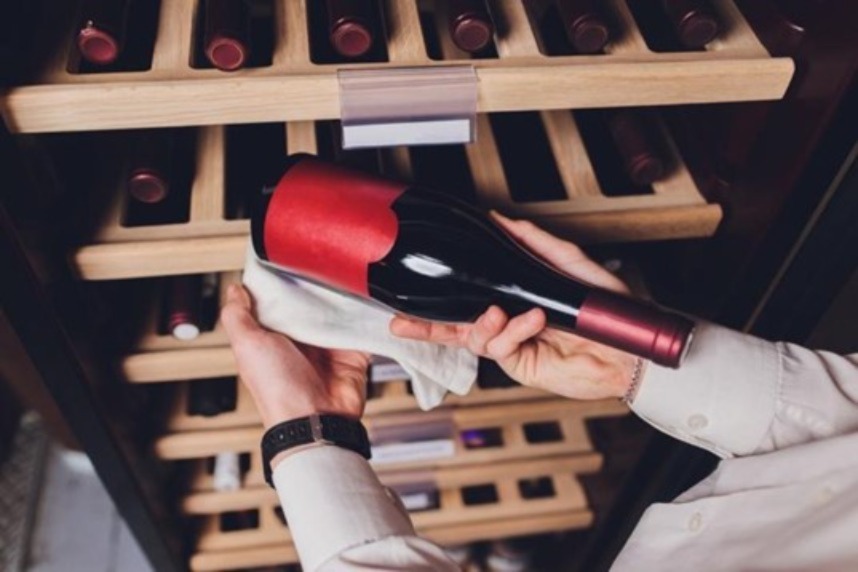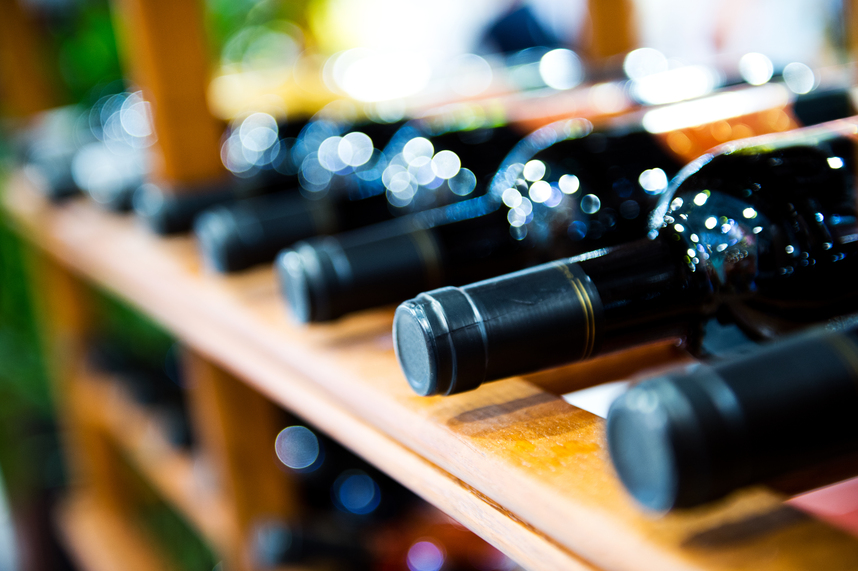In the homes of wine enthusiasts, there are bottles intended for quick consumption and others that are set aside for slow ageing. What both these types have in common is the need for proper maintenance.
There are many factors to consider in order to store wine at home at its best, but with the following little tips or a wine cellar, everything will be easier!
Wine storage: all factors to consider
There are many situations that can jeopardise the preservation of wine, an organic material that - under the wrong conditions - can deteriorate. For those who do not have a proper cellar or refrigerated wine cellar, a few small measures can be taken to protect bottles, from the most common to the most valuable.
How do you store wine? Some of the environmental factors to take into account when storing wine at home are room temperature, air humidity, light and ventilation. Whatever the season (but especially in summer, when days are hotter), it is essential to find a cool place to store your bottles, bearing in mind that different products require different temperatures.
Red wines keep well between 8°C and 12°C, and white wines between 8°C and 10°C.
The environment must also be dark (or softly lit), well ventilated to avoid bad smells and humid. In fact, the humidity of the air prevents the corks from drying out causing oxidation of the wine. But attention must also be paid to the degree of humidity: over 80% could lead to the formation of mould, which is equally harmful to the product. Respecting these criteria is important for storing wine, even without a cellar.
Many people wonder how long an unopened bottle of wine lasts and how to store it after opening. The shelf life depends on the type of wine: young red wines or sparkling wines are at their best if consumed quickly, medium-bodied wines can be stored for 3 to 4 years, and red wines for ageing up to 15. Rosé wines last about 2 years, white wines 2 to 4 years depending on the type, while sparkling wines should be consumed within 6 months to one year after bottling.
A different discourse can be made for opened bottles: in order not to lose the aromatic characteristics, it is important to store the wine in the refrigerator and consume it within a few days, maximum one week.
Wine cellar for storing wine at home: types and location

Buying a wine cellar is one of the wisest and most useful solutions for storing wine at home. It is a particular refrigerator that replicates the characteristics of a real wine cellar, providing several shelves for the proper storage of whites, reds and bubbles, even for long periods of time. These shelves ensure temperature maintenance and a considerable reduction in vibrations, another factor that could lead to wine spoilage.
Equipped with a shielded tempered glass door with UV filter - to prevent sunlight from compromising the organoleptic characteristics of the wines - the wine cellar allows the ideal temperature to be set via a display, as required. It is also equipped with a security system to prevent the door from being opened by those who should not (e.g. children or thieves), as well as energy-saving LED lighting to limit consumption.
The wine cellar can be placed in different places in the house: in the kitchen, to have wine at hand during meals, or in the living room, for a more contemplative wine tasting.
The important thing is to select a stable location, such as a flat, sturdy surface that can support the weight of the refrigerator even when fully loaded. An area in direct contact with the sun or other heat sources should also be avoided, so as not to strain the cooling system, just as it is good to place it indoors, protected from the weather.
Types of wine cellars and the must-have wines
In recent years, technology has come to the aid of wine enthusiasts, offering different types of wine cellars for storing and ageing products:
- Built-in or free-standing
The former have a cooling system at the front, which allows them to be integrated into a space, recessed between other pieces of furniture. The latter, on the other hand, have a cooling mechanism only at the back, which is why they cannot be recessed.
- Single- or dual-temperature
The former maintain one constant temperature, while the latter provide different temperatures depending on the shelf. Cellars of the second type are perfect for storing both reds - for example a good Brunello di Montalcino DOCG - and whites, such as an aromatic Gewürztraminer.
- Thermoelectric or compressor
This difference concerns the cooling system. The first type provides excellent performance even though it is small, quieter and less prone to vibration. The second works like a normal refrigerator, with a system that starts up - sometimes noisily - as the temperature rises. This type is less suitable for those who wish to store ageing red wines (such as a Nebbiolo or Barolo), avoiding vibrations as much as possible.
Once the right wine cellar has been chosen, it is also essential to fill it with the perfect wine, focusing on quality and variety: full-bodied reds such as an Aglianico Del Sannio DOC 2019 are a must, but so are slightly lighter ones such as a Lambrusco. A still white, such as a Chardonnay, and a bottle of Asolo Prosecco DOCG Superiore, perfect for any occasion, cannot be missing either!
Does wine taste corked? Here's how to use it in cooking!
In spite of all the care taken when storing wine, it can happen that a bottle is altered in aroma and taste. What causes the so-called 'corky' smell is a fungus in the cork that impairs the drinkability of the product. But this does not mean that the bottle has to be emptied down the sink.
You can avoid wasting a good label by reusing the offending wine at home: white can be used to clean kitchen surfaces, while red can be added to fruit and vegetable rinsing water to eliminate certain bacteria.
The unpleasant smell and taste can also be eliminated by long cooking times, such as those involved in the preparation of a good pot roast or a meat dish characterised by equally slow preparation.
Now that you know the techniques for storing wine at home, all you have to do is choose the right bottle on Svinando!

